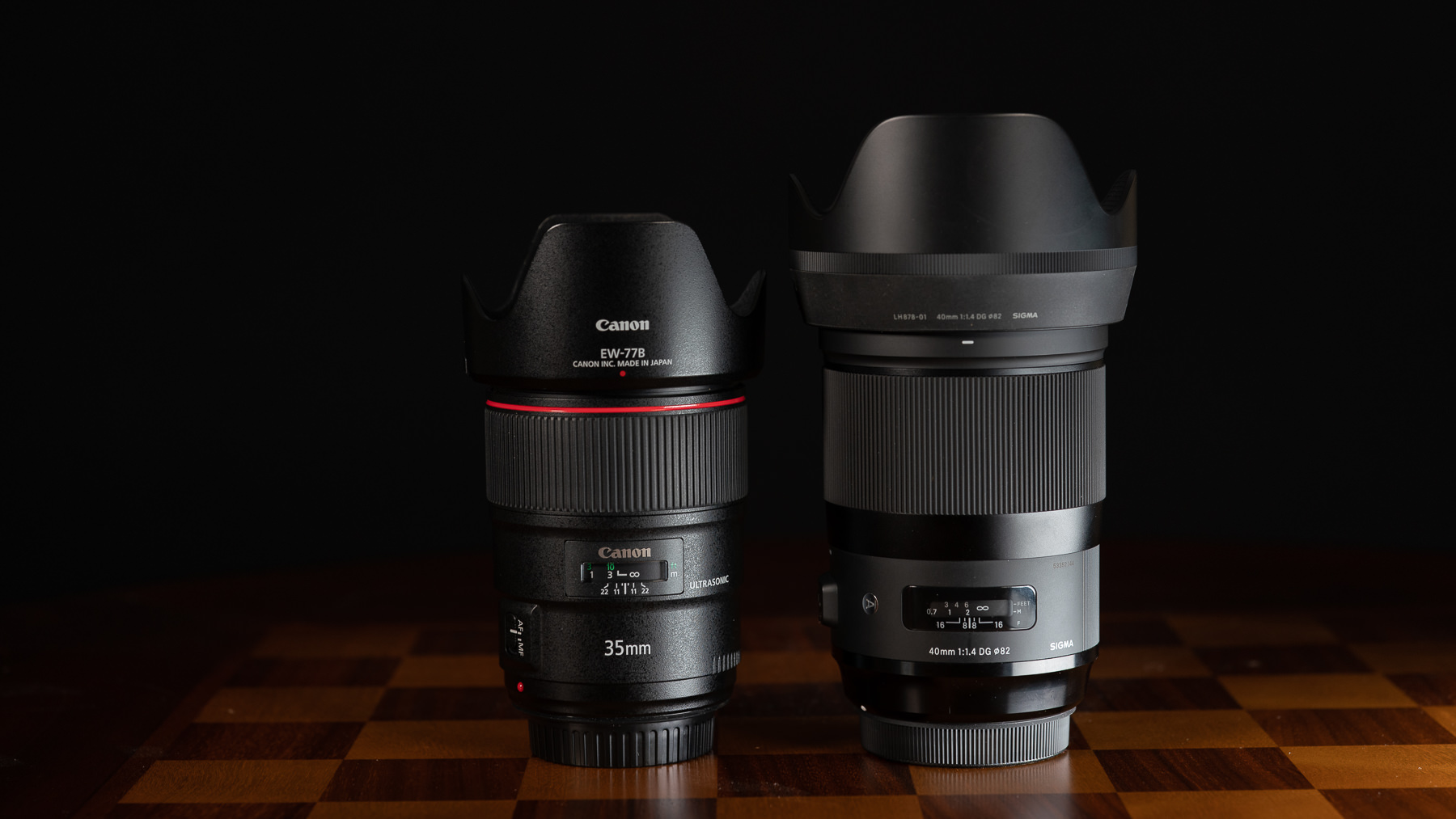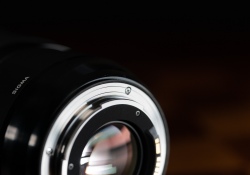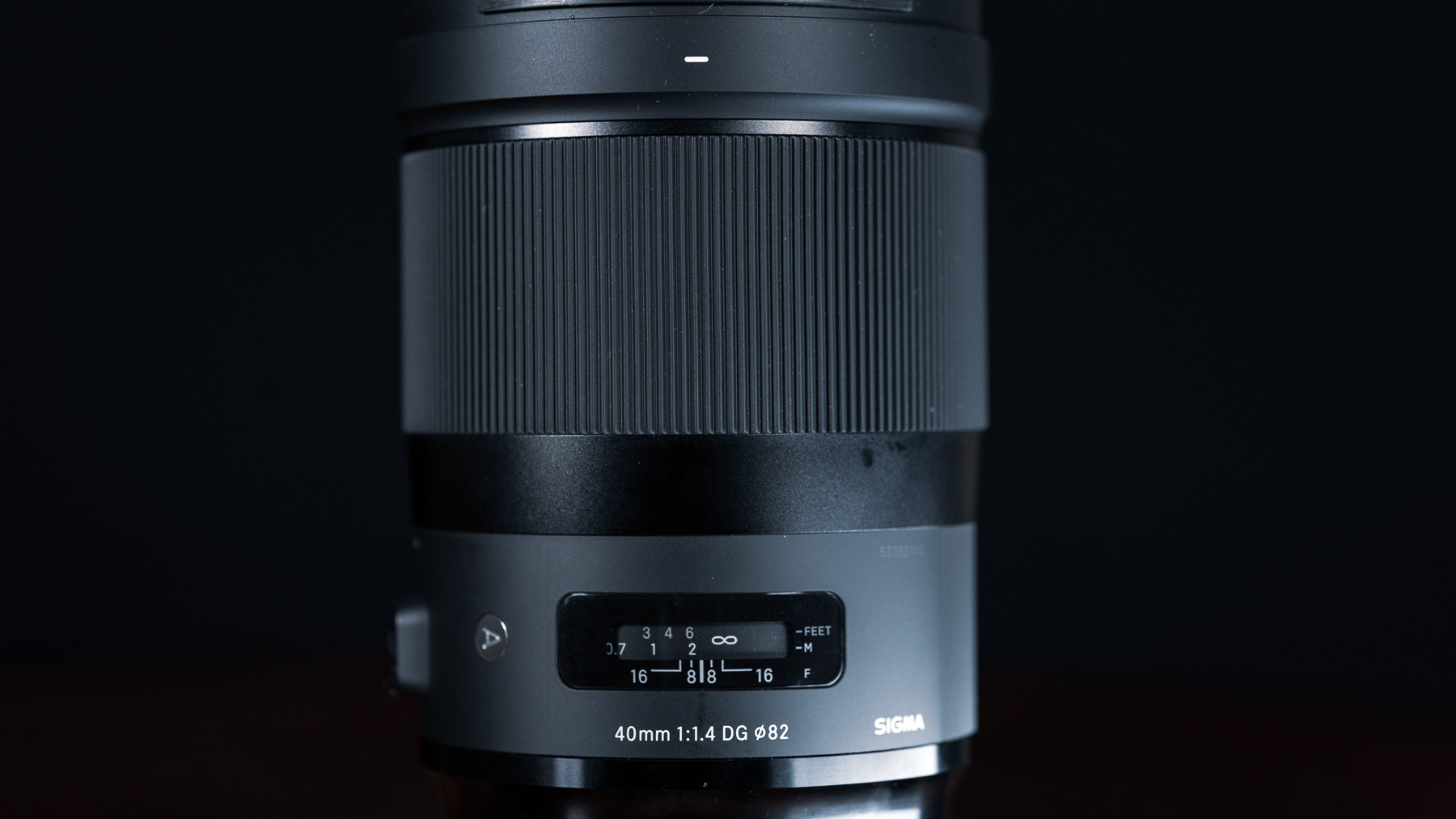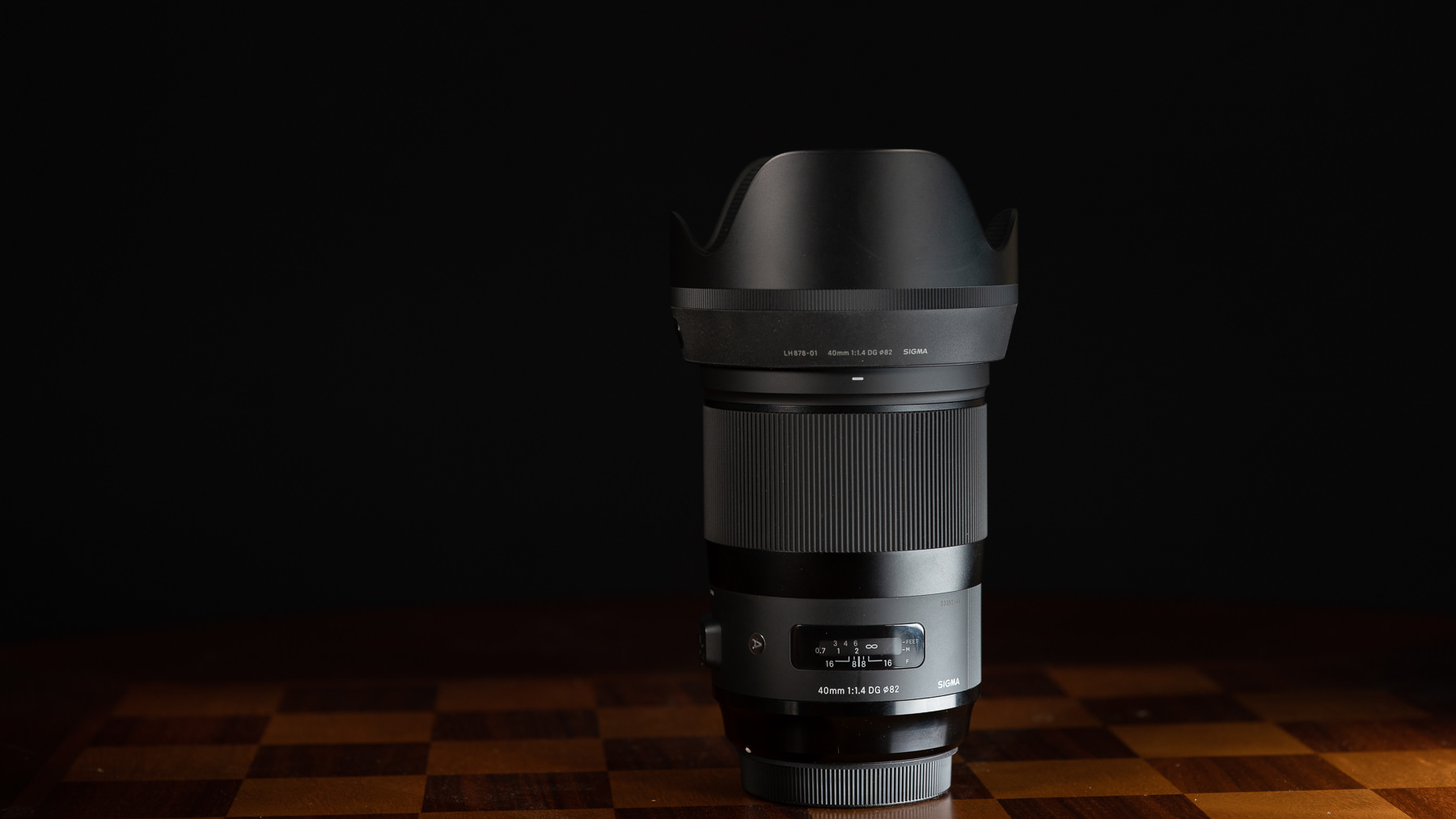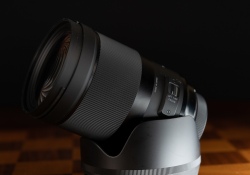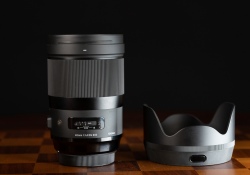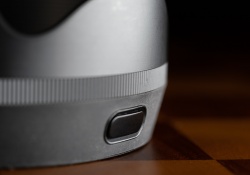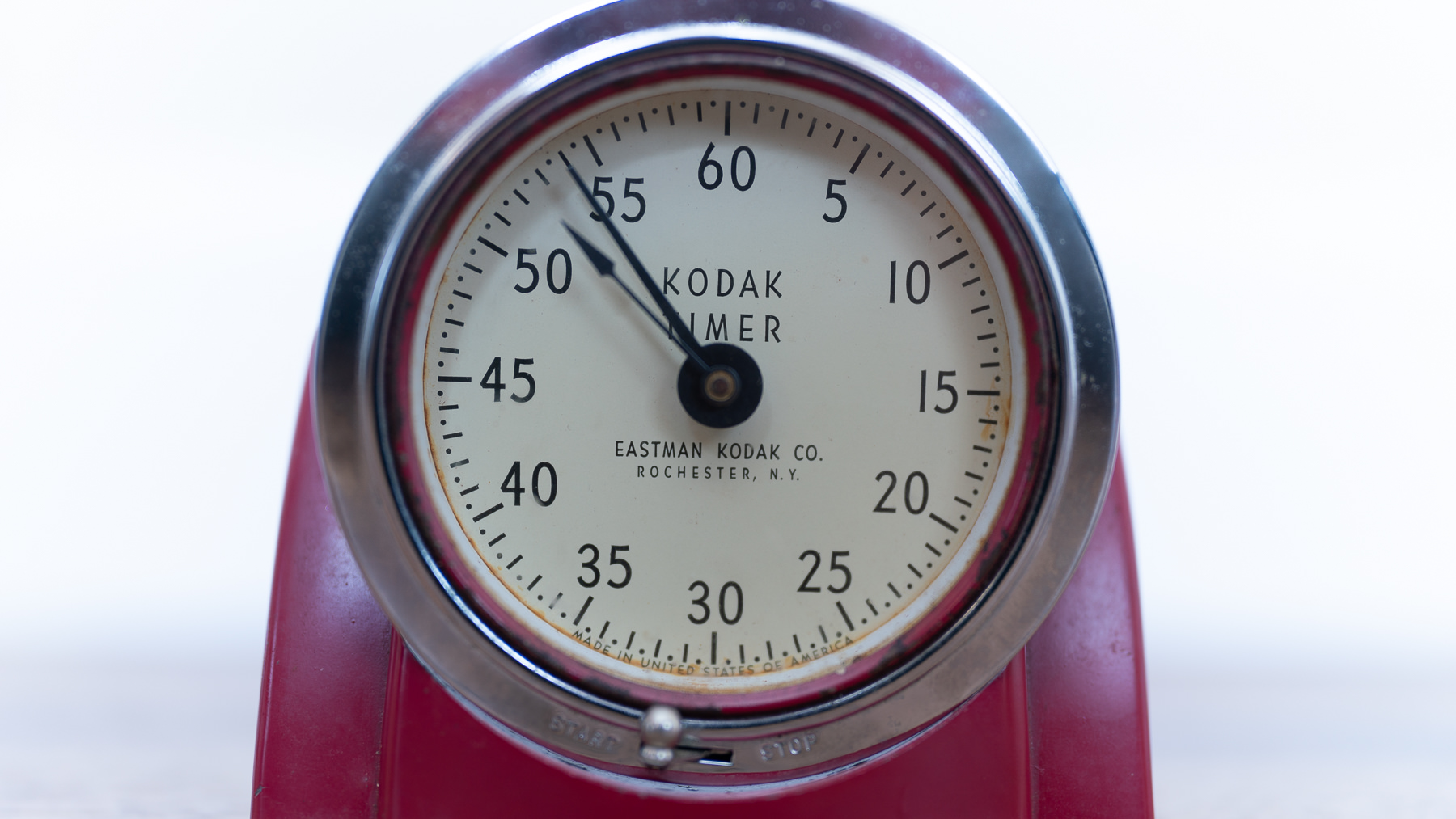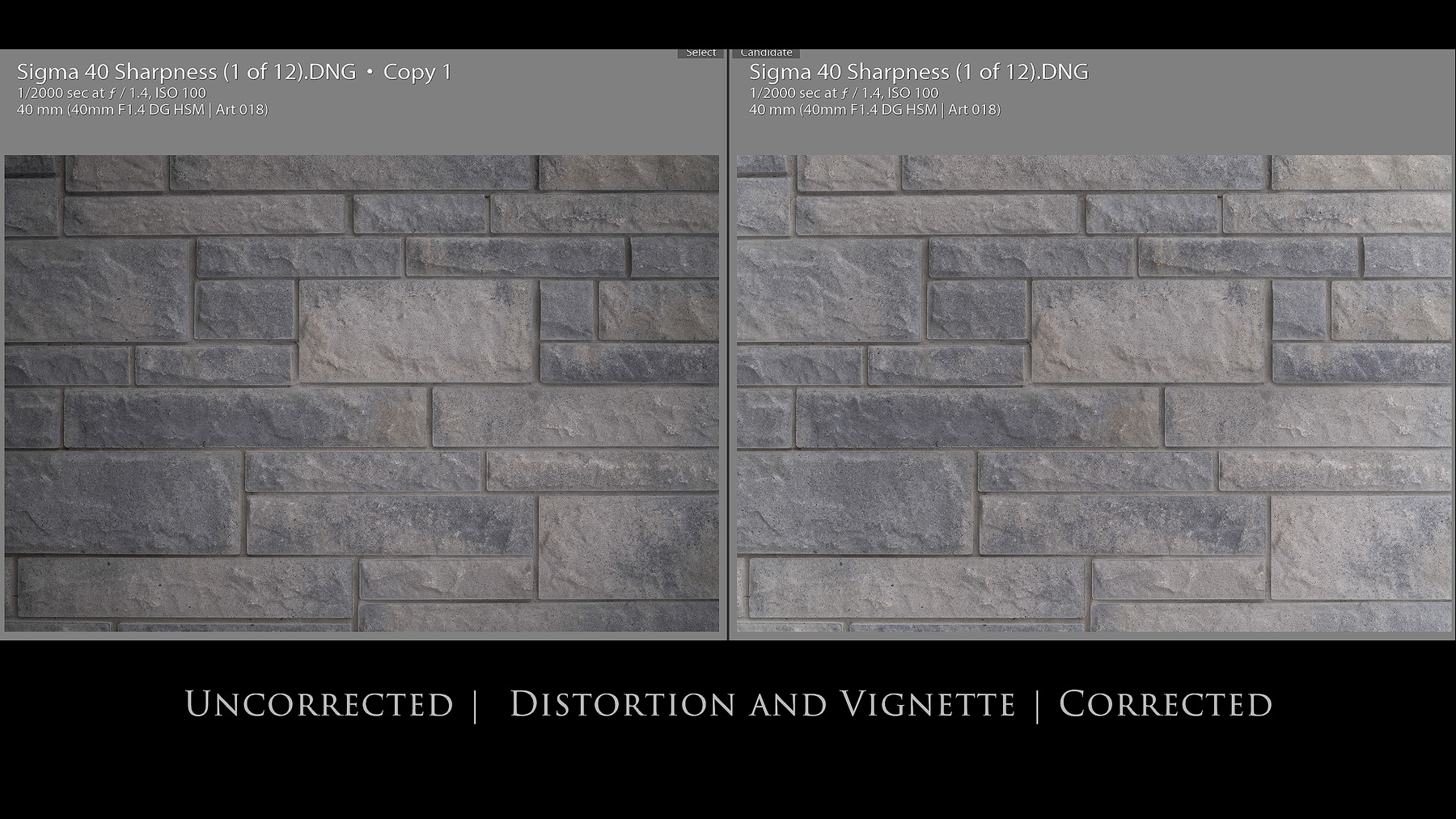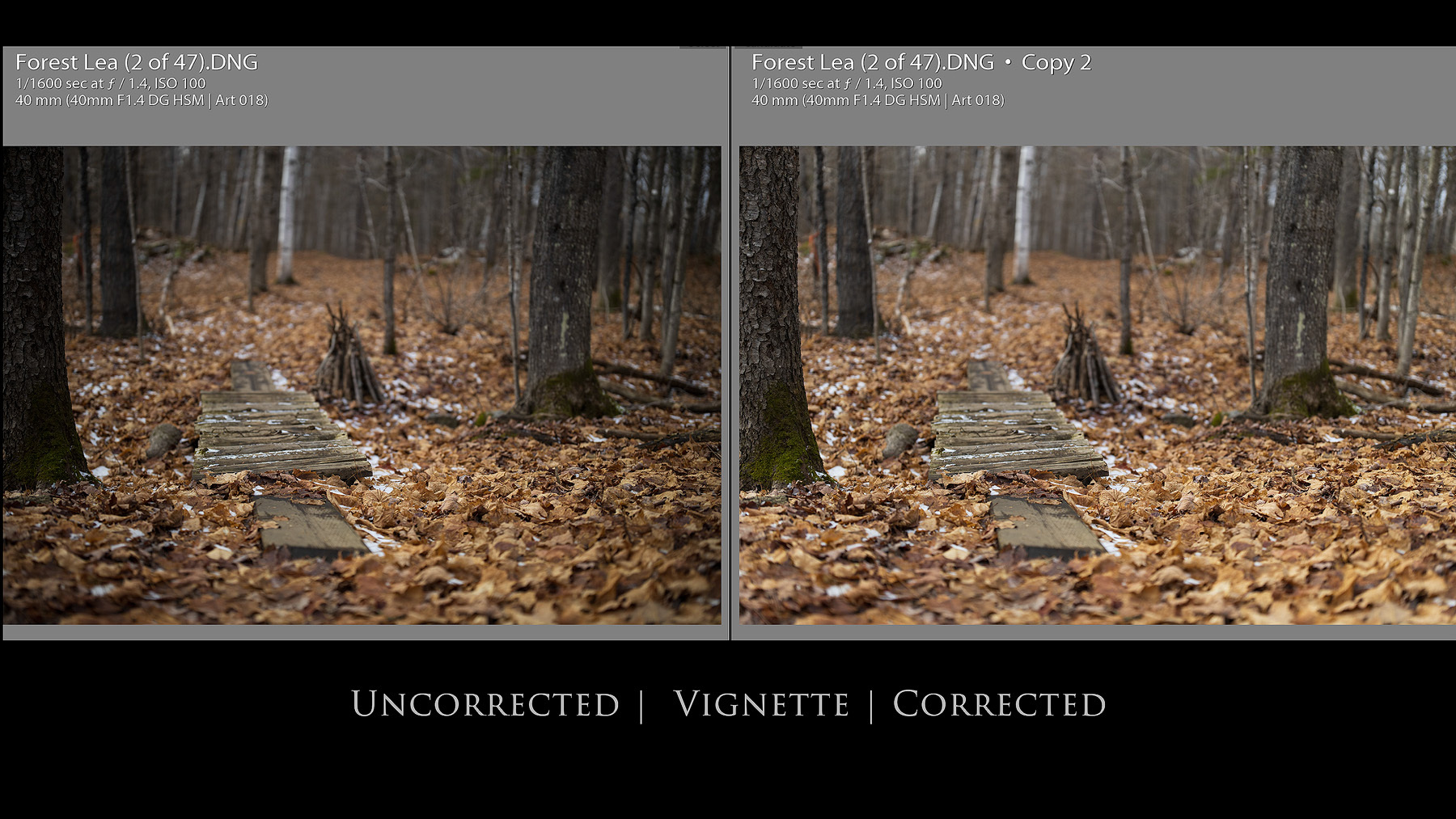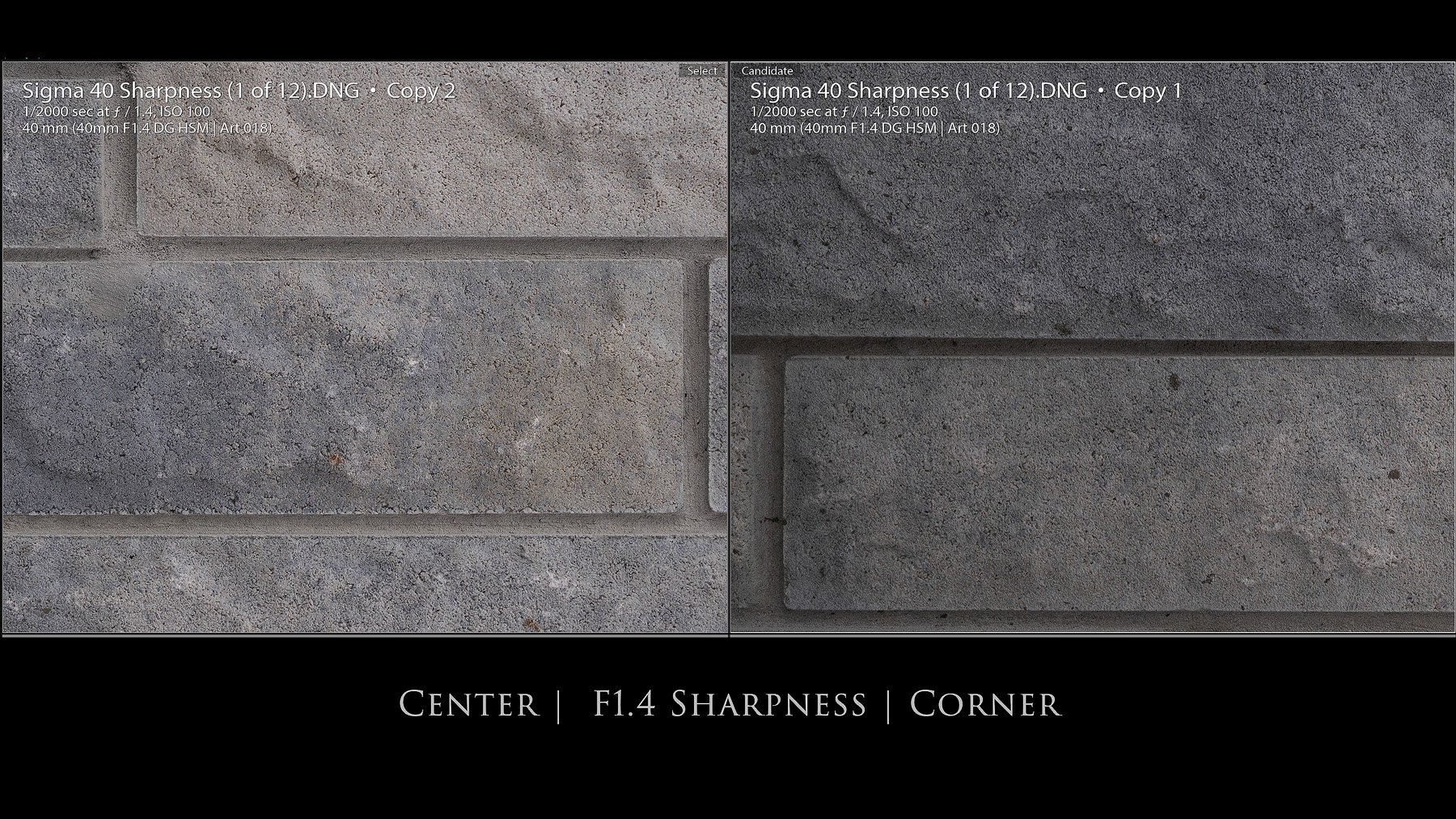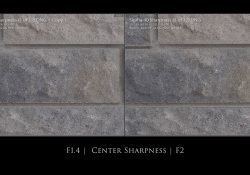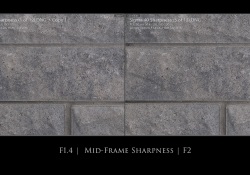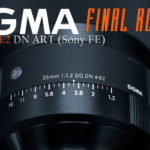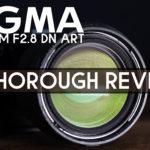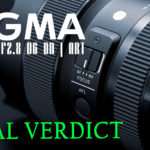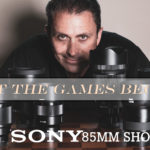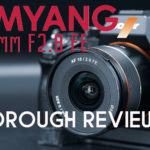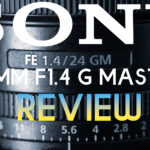This one has taken me a while to get to! I was scheduled to review the Sigma 40mm F1.4 DG HSM ART months ago, but then Sigma announced and quickly released a trio of new lenses for Sony FE (and Leica L), which I prioritized covering. The first I reviewed was the little 45mm prime lens. The second of these was thenew Sigma 14-24mm F2.8 DG DN ART wide angle angle zoom, which I reviewed here. The final member of the trio is the beast – a massive optical juggernaut – the Sigma 35mm F1.2 DG DN ART lens – which in many ways is most like the 40mm F1.4 ART that I’m now finally covering. I haven’t yet released my final review of the 35mm F1.2, but I’ll update this once I have. I had an option of reviewing the Canon EF mount of the Sony FE mount version, but I elected to go with the EF version as I’ll be reviewing it not only on my Sony a7RIII and Sony a9 bodies, but also on a Canon EOS R body that I recently acquired to do RF mount lenses reviews on. I grabbed the EF to RF Control Adapter which makes using most EF mount lenses seamless of the RF body. The Sigma 40mm F1.4 ART (hereafter called the 40ART for brevity) is an optical juggernaut, with wall to wall sharpness, high contrast, and nice bokeh to match. It joins the 28mm F1.4 ART (review here) and 105mm F1.4 (review here) as examples of Sigma’s best optical work in a prime lens. It’s also very large (one of Sigma’s largest non-telephoto lenses), which is in some ways more incongruous because most 40mm lenses tend to be small (all of the previous 40mm lenses I’ve reviewed have been “pancakes” or very compact).
Sigma has been on somewhat of a roll as of late as they continue to refine their process of lens development in the ART series. Early on I found the ART series somewhat frustrating, as there was frequently a blend of very good optics, a reasonable price, but then a frustrating autofocus experience. In more recent history, however, Sigma has managed to make positive changes to the autofocus on most of their new releases, which has made it easier to give their lenses a more wholehearted recommendation. As Sigma has continued to improve their lenses, however, the “reasonable price” part of the equation has become more questionable. While it is still true that a comparative Sigma lens is still cheaper than than an equivalent first party lens (where such a lens exists), their pricing is typically now much closer to that of the first party lens than a third party alternative. Case in point: when the 35mm F1.4 ART was released (to much fanfare), it was priced at $899 USD (and is currently on sale for $649 USD at the time of this review). The 40ART release is a different story; it released at a price point of $1399, some 55% higher. Now, to be fair, I think the optical performance of the lens warrants the price tag, but it’s also fair to observe that Sigma has in effect vacated the “affordable” space and left it to others. There’s points to celebrate about this (higher quality, better lenses) and also something to lament (those on a budget have fewer new options).
Still, Sigma has a clear market strategy now, and it seems to be serving them well. The 40ART represents one of the more uncompromising lenses that I’ve reviewed (outside of the Zeiss Otus series); it makes no pretenses to moderation in its size (3.46 (W) x 5.16″ (L) / 87.8 x 131 mm) or weight (2.6 lb / 1.2 kg). This is a 40mm prime lens that weighs nearly as much as a 70-200mm F2.8 zoom (it actually outweighs Canon’s soon arriving RF 70-200mm F2.8L IS). As you can see from the photo above, it dwarfs the typically-sized Canon 35mm F1.4L II. But what the 40ART does have is a lot of Sigma’s wizardry in building high end Cine (cinematic lenses for video) that demand the very best in performance. This is also a fantastic focal length, with a slightly narrower angle of view than 35mm (good for portraits) but wider than 50mm (easier to use for general purpose). Does that outweigh the disadvantages of size, weight, and price? Read on to find out…
Prefer to watch your reviews? Here’s Parts 1 and 2 of my two-part video review:
Follow Me @ Patreon | My Newsletter | Instagram | Facebook | Twitter | Flickr | 500px
Sigma 40ART Build and Handling
While it is true that the ART series formula is no longer as fresh and exciting as it was when Sigma unveiled their new Global Vision look, it is equally true that Sigma has been steadily refining the formula. It’s been a while since we have seen revolution in design from Sigma, but we have definitely been seeing some very positive evolution in the ART series formula to what is now a very complete package. One of the key aspects of this genesis is that Sigma has fully embraced the idea of professional-grade build including full weather sealing. The Sigma 40ART includes a robust gasket at the lens mount, internal seals, and an oil and water resistant coating on the front element.
The Sigma 40mm F1.4 DG HSM ART comes in two different configurations for a total of five different lens mounts. The first is the DSLR configuration, which is actually the baseline design (DSLR lenses can be adapted to mirrorless, but mirrorless-designed lenses (to this point) cannot be adapted to DSLRs successfully. The DSLR mounts include Canon, Nikon, and Sigma. There is also a mirrorless conversion configuration where an additional bit of length has been added to the barrel near the lens mount to accommodate the different flange distance (there’s a different distance requirement of the final lens element from the sensor to achieve proper focus). Sigma utilizes that additional space by adding essentially a customized adapter that helps convert the focus system to work with mirrorless cameras…in this case Sony (FE) or Leica (L). As noted at the beginning, I’ve actually chosen an EF mount so that I could maximize flexibility for where I use it – on my Canon DSLR, on Canon mirrorless (via adapter), and on my Sony cameras via the MC-11.
The Sigma MC-11 mount converter has been a very clever addition to Sigma’s “Global Vision”. This is essentially an adapter for Canon EF lenses to adapt to the popular Sony mirrorless FE mount. The advantage is that it is regularly updated (via software that we’ll examine in a moment) to embrace new focus improvements and to eliminate issues. The end result is that many Sigma lenses function nearly like native Sony lenses via the MC-11 (they now have a similar MC-21 adapter for Leica L). I have yet to test any adapted lens with any adapter that functions as well as Sigma lenses via the MC-11 on Sony bodies. I got essentially flawless performance on my Sony a7RIII and a9 cameras with the 40ART. You can see a dedicated gallery in the Lens Image Gallery page. My MC-11 gets used on a near daily basis with one lens or another.
Another area that Sigma has worked to “future-proof” their lenses in the ART lineup is their USB dock. This, along with the Sigma Optimization Pro software, allows you to apply firmware updates to their lenses along with make customization tweaks to lens behavior (like autofocus). I strongly suggest that Sigma owners purchase the USB Dock and spend a little time in the Optimization Pro software to get the most out of their lenses.
Another key development (at least for Canon shooters) has been that Sigma “cracked the code” in 2018 and now offers compatibility with Canon’s Lens Aberration Corrections (LAC) in camera. This eliminates one of the key disadvantages of third party lenses in the past (a reality that still remains for every other third party, actually, from what I see) in that first party lenses could receive in-camera corrections while third party lenses could not. The 28ART receives near-full in camera support, so JPEGS can receive processing correction for distortion, chromatic aberrations, vignetting, and diffraction. While a lens like this has relatively few aberrations, the ability to have vignette and distortion corrected is certainly welcome. While LAC are not applied to RAW files (for any lenses on Canon), it’s easy to apply those type of corrections in post anyway.
I’ll explore autofocus more in the next section, but I will point out that I found that Sigma took a huge leap forward in their autofocus accuracy (at least on Canon, which is the DSLR brand that I test) about the same time as they got access to Canon’s LAC. I’ve theorized that Sigma entered into a private agreement with Canon and gained greater access to their focus algorithms at the same, though I have no proof to support that theory. What I do know is that I’ve tested essentially every ART series in the lineup, and I noted a huge uptick in focus accuracy and reliability during that same time. The 40ART was born during that period, and shows the benefits of that improved focus.
The overall look of the lens is familiar, and employs Sigma’s combination of metal bits (including a brass mount) along with some “thermal composites” (engineered plastics) that combine into a lens that is both attractive and with the feel of durability. It compares favorably to similar lenses from Canon, Sony, or Nikon, with a very robust feel. As noted, the lens is very significantly sized and utilizes a large (but common) 82mm front filter thread.
One change that Sigma has implemented in this design is the inclusion of a locking mechanism on the lens hood. I’m personally not persuaded that a lock is needed if the lens hood is well engineered, but this has been a recent trend. I will note that Sigma has done a better job of implementing this lock than most other lenses I’ve seen, as the release button is better shaped (large enough to easily depress) and the action of the button is nice and smooth. The lens hood clicks into place (and the lock engages) with a satisfying click.
Sigma’s lens hoods are always well designed, with a mix of materials that includes soft touch materials in the transition area where the hood mounts along with a thin ribbed section that allows you to have a nice grip on the hood when releasing it. Unlike the 28mm F1.4 ART, one can use a circular polarizer without it catching or jamming on the lens hood, which is a relief. Large aperture primes like this lend themselves to use with either a circular polarizer or ND filter to help shoot at wide apertures in bright conditions.
Sigma gets bonus marks for always including a very nice padded case for storing and transporting the lens in.
There is one switch on the lens barrel, and that is to switch between AF (Autofocus) and MF (Manual Focus). Full time manual override is available. The focus ring itself is nice and wide and well damped.
It can focus down to 1.31ft (40cm) and achieves a moderately useful 0.154x magnification.
This is essentially average for a 50mm lens, but not as useful as the magnification figure on most 35mm lenses.
In summation, this is a big, heavy lens (you already knew that!), but also one that is nicely made and seems ready to handle professional-grade use.
40ART Autofocus and Video Performance
As I noted above, autofocus performance has gone from being an area of weakness to an area of strength for newer Sigma lenses. While I still recommend spending some time with the USB dock and tweaking focus at different focus distances, I’ve found that “out-of-the-box” focus performance is vastly improved in recent Sigma releases. My overall focus accuracy was excellent during my review even at F1.4 at a variety of focus distances. Now, to be fair, I’m just about personally finished with DSLRs. I had hung onto them for tracking advantages, but the a9 has cured me of that (and is definitely my favorite camera to track action with right now!) I did this review essentially exclusively on a Canon EOS R and Sony full frame mirrorless cameras (a7RIII and a9) and not having to worry about calibrating focus on lenses I’m reviewing is a treat. The benefit to mirrorless focus is that I don’t recall one missed focus shot over my review no matter where in the frame I was composing. Gone are the days of “focus-and-recompose” for me.
I recognize that many of you will be using this lens on a DSLR, so I’ll have to go on my experience with recent Sigma lenses along with anecdotal feedback when I say that I think it will focus well for you there as well. A little work with the USB Dock and Sigma Optimization Pro software will help you get the best out of it.
This video episode hits on both autofocus and video performance and is worth a look:
Being able to use Eye AF on either Canon or Sony (both are now excellent!!) helps a lot. Look at how beautifully focused this shot of my dog’s eye is:
Human Eye AF worked excellent, too, with beautiful results on Canon:
…and on Sony:
I put on an ND64 filter and a polarizer and tested focus during my review and was able to successfully focus even in lower light conditions (twilight) with either filter in place. There’s a minor slowdown for major focus changes, but nothing significant. The lens utilizes Sigma’s HSM (HyperSonic Motor) focus system, and it focuses quickly and reasonably quietly (there’s a faint scratching and whirring that is most noticeable during Servo/Continuous focus). When shooting video the focus pulls are smooth and accurate, though in a quiet environment the on-board mic will pick up a light clicking sound as focus changes occur.
I didn’t test the autofocus for sports, but I feel confident that the lens will serve well for the more typical purposes of weddings, events, portraits, general purpose, or street. Autofocus is fast, quiet, and confident: a great combination!
Video is somewhat harder to demonstrate in a text review. There’s a weird dichotomy that exists in our camera world right now. Mirrorless lenses typically employ focus systems that are much better for autofocus during video. They are quieter and smoother when doing focus pulls or changes. But if you want to manually focus, their focus-by-wire systems are frankly awful, without hard stops, tactile feedback, or the ability to make consistent, repeatably focus throws. The primary design of the 40ART is for DSLRs, so its focus is not completely silent during autofocus focus pulls. You’ll hear a light clicking sound that will be picked up if you recording audio on camera. Focus pulls are otherwise fairly smooth, though with a little lag while the focus motor spools up inertia.
When adapted to mirrorless, I found that I preferred the behavior of the lens on the EOS R, where it focused more smoothly and quietly. This shouldn’t be surprising, as while the EOS R is a mirrorless camera, it is still using Canon focus algorithms and the lens mount I had was a Canon EF. On Sony the focus pulls were more sluggish and there was more obvious clicking sounds as the focus motor tried to adjust.
The footage on either camera was excellent, however, as the lens is extremely sharp and provides excellent detail. Another potential plus is that the manual focus is not focus-by-wire. The focus ring is broad, nicely ribbed, and moves along with good damping. You can produce more precise focus throws because there is a mechanical coupling to the lens elements rather than being routed through the focus system. There are pros and cons to both approaches; just decide which works better for you.
Sigma 40ART Image Quality
There’s one principle reason that people are interested in this lens, and it isn’t because of the autofocus, the build, or the price. People want the razor-sharp image quality that this lens is capable of. This is an optically complex lens with 16 elements in 12 groups (about the same as some 24-70mm F2.8 zoom lenses!). This includes three F Low Dispersion (FLD) and three Special Low Dispersion (SLD) elements along with one aspherical element. You can see the optical breakdown in the the latter half of this video episode. Let’s start with a look at distortion and vignette.
As you can see, distortion is basically a non-factor. The uncorrected image (on the left) looks essentially the same as the corrected image on the right. A close look shows a very slightly amount of barrel distortion, but it is negligible even with a brick wall test designed to expose distortion. This is definitely better than what an equivalent 35mm lens would be. What you can also see is that there is a fair amount of vignette that moves towards the center of the frame in a fairly linear pattern.
A quick diversion on vignette: when I was reviewing the Zeiss Otus 100mm F1.4 (an AMAZING lens!) I had a conversation with a Zeiss exec about vignette. He said something interesting to me regarding vignette, in that the quality of the vignette in certain lenses should be considered part of the design rather than a defect. I thought about that, and realized that while this isn’t true in all situations (there are definitely some settings like snowy scenes where vignette is a negative), it is certainly true in many situations. I think this may be true of the 40ART as well. Here’s a case in point: look at this image.
The uncorrected image just works. The natural vignette focuses the eye toward the point of focus. It lends some mystery to the image, and, though the scene itself isn’t breathtaking, the image itself has a certainly moody appeal. Here’s a look at a version where I’ve added a little color pop to it.
I noticed this to be the case in a number of such images. Here’s a few more:
But, as noted, I’m far less entranced by vignette where the corners should be white, like with snow here:
The good news is that the vignette is easy to correct either by enabling corrections in camera (JPEGs) or by applying the standard profile in post (RAW). You can choose the look you like best, but don’t be afraid to experiment with leaving the vignette uncorrected in some situations, as the nicely linear nature of the vignette on the 40ART can be a feature rather than a bug.
Moving on to sharpness. As expected for an extreme optical instrument like this, sharpness is extremely high at F1.4 in the center of the frame and not far behind in the edges. You have pretty much corner to corner sharpness from wide open:
If we go out to the real world, we will find the same truths. Incredible detail and contrast even at F1.4:
Here’s a tight crop of a photo of my dog at F1.4. Look at the microcontrast and acutance (rendering of the fine details) here:
Both of the shots above are from the high resolution Sony a7RIII (42MP). It also resolved fantastically on my EOS R at a variety of focus distances at F1.4. From portraits to landscapes to close-up work, the 40ART is very real-world sharp at F1.4 in a variety of lighting conditions.
Part of the reason for the excellent contrast is highlighted in this shot:
We’ve got a primarily darker scene with a bright white statue. There are a number of transition areas around that statue from bright to dark, and yet there is no evidence of longitudinal chromatic aberrations around the edges. Low CA (particularly LoCA) results in superior contrast, which the 40ART delivers in spades.
This is definitely a lens that performs extremely well at F1.4 in a way that we simply hadn’t seen until the Zeiss Otus lenses arrived (lenses that were equally huge).
F2 shows a general improvement in vignette and slightly more contrast in the center of the frame. Midframe and corner performance shows slightly more resolution and contrast.
There’s a similar improvement from F2 to F2.8. I see a bit more center contrast improvement at F4, with F5.6 being the peak landscape aperture in terms of across-the-frame sharpness and contrast. Here’s a few landscape shots:
I liked the lens for portraits as well, with a lot of resolution and contrast but also nice looking skintones.
Sigma has done a good job of designing a lens with both high sharpness and contrast along with nice bokeh rendering. This image shows that there is some of the typical geometric deformation along the edges (lemon shaped bokeh “circles”).
Stop down to F2 and get nicely even bokeh circles across the frame. In every situation I used the lens in, however, I found the rendering of the out-of-focus to be very nice. I think the lens is particularly strong for shooting medium distant shots with nice delineation of the subject and a nicely diffused background. Here’s some general examples at a variety of focus distances.
Let me share another portrait shot to further illustrate this. At F1.4 there is a nice cutout of the subjects while the background is nicely soft.
The lens elements have a special multi-coating to help with flare, and I would say the lens does fairly good for a large-aperture prime in terms of flare resistance. Very little veiling (loss of contrast), and little ghosting at large apertures. The stopped down shot (middle one below) shares a more clearly defined flare/ghosting pattern, but not a particularly destructive one.
All in all, there isn’t really any glaring optical flaw for me to point to. This is a very strong lens optically…as expected. There are few wide-to-normal prime lenses that can compete at any price point. You can find many more great photos in the Image Gallery…check them out!
Conclusion
I’ll be honest: I was initially put off by the whole concept of the Sigma 40mm F1.4 DG HSM ART lens. I’ve spent time with a number of 40mm and 45mm lenses, and the largest of those had been the Tamron SP 45mm F1.8 VC, which is less than half the weight of the 40ART. The Sigma is some 640% heavier than the Samyang AF 45mm F1.8 that I recently reviewed. I’m not a fan (personally) of what seems like a persistent shift towards ever larger and heavier lenses. I find that smaller or even moderately sized lenses are far more likely to go into my bag when I’m planning for an event or shooting outing, and often I don’t want to take along a full backpack. I like carrying a camera along in, say, my Cecilia Tharp 8L bag. A lens the size of the 40ART essentially fills the whole bag, meaning that I have no other focal lengths to choose from if I pack it in there. My point is that large, heavy lenses fundamentally change the way that you use them because of their size, and I think it is a valid point to raise. The 40ART is the kind of lens that you need to be intentional about bringing along, and so don’t buy if it your priority is to travel light.
But what I have found across my review period is that this lens certainly does have a purpose, and the number of people that requested I do this review indicates that it also has an audience. People buy lenses for different reasons, and there isn’t a “right” way to do photography or lens design; it really comes down to preference. If you preference is absolute performance, and the idea of getting Zeiss Otus levels of resolution in a more reasonably-priced, autofocusing package, then the 40ART might be incredibly appealing. No, I’m not arguing that the lens is Otus levels of special in its color or overall rendering, but it isn’t far off. This is a fabulous focal length, and the lens is fantastically sharp and contrasty at all tested apertures (there’s a little loss of contrast at F16 due to diffraction). There isn’t really any optical weakness, and images look great.
So, if your shooting style involved either shooting in a studio (where you aren’t packing a lot of gear), or if you like to use one or two focal lengths and can afford to take on some extra size as a tradeoff, then the Sigma 40mm F1.4 ART joins the 28mm F1.4 and 100mm F1.4 ART lenses as an unconventional trinity of some of Sigma’s most exceptional lens. I would personally choose this trio over their 35/50/85mm trio any day of the week for sheer optical performance. Sigma seems to have unlocked some extra “specialness” in these lenses that sets them apart, though, to be fair, they are also more expensive than the other trio. Deservedly so, though, as these are fantastic lenses and have been among my favorite lenses that Sigma has ever made…despite their size.
Pros:
- Extremely sharp across the frame
- Excellent contrast
- Fast, quiet autofocus
- Excellent chromatic aberration control
- Low distortion
- Fairly good flare control for a wide aperture prime
- Nice bokeh
- Good build quality and weather sealing
- Works well on mirrorless cameras tested on
Cons:
- No other 40mm lens comes close to the size and weight of this lens
- Sigma’s prices are creeping up
- Expect a little clicking and whirring if using video AF
Purchase the Sigma 40mm F1.4 ART from B&H Photo | Amazon | Amazon Canada | Amazon UK | Amazon Germany | Ebay
Sony a9 Camera: B&H Photo | Amazon | Amazon Canada | Amazon UK | Amazon Germany | Ebay
Purchase the Canon EOS R @ B&H Photo | Amazon | Amazon Canada | Amazon UK | Amazon Germany | Ebay
Purchase the Canon EF to RF Control Ring Adapter: B&H Photo | Amazon | Amazon Canada | Amazon UK | Amazon Germany
Sony a7RIV Camera: B&H Photo | Amazon | Amazon Canada | Amazon UK | Amazon Germany | Ebay
Sony a7R III Camera: B&H Photo | Amazon | Amazon.ca | Amazon UK | Ebay
Peak Design Slide Lite: Peak Design Store | B&H Photo | Amazon | Amazon Canada | Amazon UK
Peak Design Leash Strap: Peak Design Store | B&H Photo | Amazon | Amazon Canada | Amazon UK
BenQ SW271 4K Photo Editing Monitor – B&H Photo | Amazon | Amazon.ca | Amazon UK
Adobe Photoshop Creative Cloud 1-Year Subscription
Exposure Software X5 (Use Code “dustinabbott” to get 10% anything and everything)
Visit Dustin’s Amazon Storefront and see his favorite gear

Purchasing your gear through B&H and these links helps fund this website and keeps the articles coming. You can also make a donation here if you would like. Visit my Amazon page for some of my gear of choice! Thank you for your support.
Great News! I can now offer a 5% discount on all purchases at Amplis Foto, Canada’s Leading Photographic Supplier. Please enter discount code: AMPLIS52018DA in your cart. It is good for everything in your cart, and is stackable with other coupons, too! It will take 5% off your entire order! Proceeds go towards keeping this site going and providing you with new reviews!
Check me out on: My Patreon | Sign Up for My Newsletter | Instagram | Facebook | Twitter | Flickr | 500px | Google+ |
Use Code “DUSTINHDR” to get $10 off ($15 CDN) any Skylum product: Luminar, Aurora, or AirMagic
Keywords: Sigma, 40mm, Sigma 40mm Review, Sigma 40mm ART, 40mm ART, 40mm 1.4 ART, Sigma 40mm F1.4 Review, Canon EF, Sony FE, Nikon F, 40mm, F1.4, 1.4, FE, DG, ART, Sony FE, Sigma ART, F1.4, Dustin Abbott, Review, Autofocus, Sony a7RIII, Sony A7RIV, Sony a7R IV, Sony a9, Canon EOS R, Canon 5D Mark IV, Hands On, Video Test, Portrait, Video, Coma, Real World, Comparison, VS



